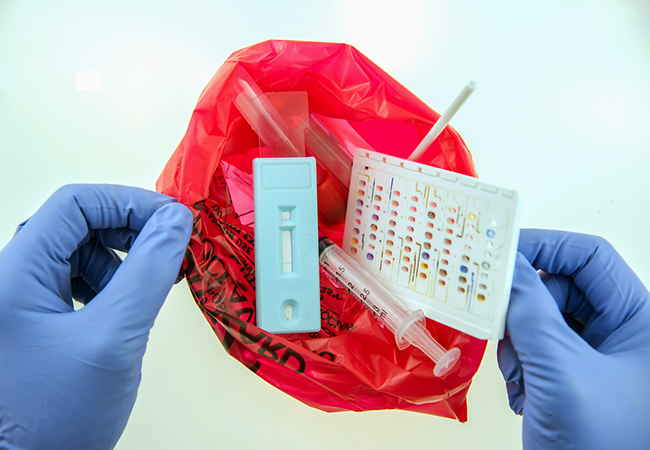Defending Health: Revealing the Essence of Specialist Medical Waste Removal
Keep Ahead of Regulations: Expert Guidance on Medical Garbage Disposal
In a globe where the medical care industry is continuously progressing, it is imperative for medical facilities to stay ahead of policies when it pertains to the correct disposal of clinical waste. With rigorous standards and constant regulatory changes, it can be challenging to navigate the complexities of this process. However, with skilled recommendations, centers can make certain conformity and mitigate risks associated with improper waste disposal. From comprehending the different categories of clinical waste to applying the ideal collection and partition techniques, this discussion will certainly give workable pointers and useful insights to help centers remain ahead of regulations in the ever-changing landscape of clinical garbage disposal.
Comprehending Medical Waste Categories
Comprehending clinical waste classifications is crucial for proper disposal and management in health care centers. Medical waste describes any waste produced by medical care activities that might pose a danger to public health or the atmosphere. It is crucial to categorize clinical waste properly to ensure its risk-free handling, transportation, disposal, and therapy.
There are numerous categories of medical waste that health care centers need to be familiar with. One of the most usual categories include transmittable waste, pathological waste, sharps waste, pharmaceutical waste, and chemical waste. Each group has specific guidelines and guidelines for its correct monitoring and disposal.
Pathological waste refers to human tissues, body organs, or body components that need special handling and disposal. Drug waste consists of run out, extra, or polluted medications that need careful handling and disposal.
Staying Up-To-Date With Regulatory Adjustments
Remaining present with regulative changes is important for health care facilities to ensure conformity and appropriate administration of medical garbage disposal. medical waste removal service. With policies constantly advancing, it is necessary for health care facilities to remain updated to avoid fines, fines, and potential injury to the atmosphere and public wellness
To remain ahead of governing modifications, medical care facilities should develop a system for monitoring and monitoring updates. This can be done by signing up for governing e-newsletters, attending workshops and conferences, and proactively participating in sector associations. In addition, facilities need to assign a personnel or group responsible for remaining informed and sharing information to appropriate stakeholders.
Regular communication with governing agencies is likewise vital. Health care centers should establish partnerships with local, state, and federal firms to guarantee they recognize any kind of changes in guidelines that might impact their waste administration methods. This can be done through routine meetings, involvement in public remark durations, and proactive interaction with governing agencies.
Additionally, healthcare centers should take into consideration partnering with waste management firms that specialize in clinical waste disposal (medical waste disposal services with WasteX). These business are usually well-versed in the current guidelines and can give guidance and support to make sure conformity
Applying Correct Collection and Partition Methods
To efficiently handle medical waste disposal, health care facilities should establish appropriate collection and segregation methods in accordance with regulatory guidelines. Implementing these methods ensures the safe handling and disposal of possibly unsafe products, protects the atmosphere, and reduces the risk of infections and injuries to healthcare employees and the basic public.
Correct collection and partition techniques involve making use of marked containers and classifying systems. Medical care centers ought to offer clearly classified containers for various types of medical waste, such as sharps, transmittable waste, pharmaceutical waste, and non-hazardous waste. These containers must be color-coded and clearly marked to stay clear of complication and promote very easy recognition.
Furthermore, healthcare centers must train their team on the proper procedures for collecting and setting apart clinical waste. This includes informing them on the different kinds of waste, the proper containers to use, and the importance of adhering to laws and guidelines. Normal training sessions and refresher course courses need to be carried visit here out to make certain that team member remain updated on best techniques.
Additionally, medical care centers must establish a system for routine collection and disposal of clinical waste. This may entail partnering with certified waste monitoring business that concentrate on medical garbage disposal. These companies will certainly ensure that the gathered waste is transported and taken care of in compliance with regulative needs.
Choosing the Right Disposal Techniques

Incineration is one of the most common and effective techniques for getting rid of specific kinds of medical waste, such as pathological waste and sharps. It includes the controlled combustion of waste at heats, decreasing it to ash. Incineration can release dangerous contaminants into the air and contribute to air pollution.

Various other disposal methods consist of chemical treatment, microwave therapy, browse around this site and landfilling. Chemical treatment includes using chemicals to counteract the waste and disinfect. Microwave therapy uses microwave power to heat and sanitize the waste. Landfilling involves burying the waste in a marked landfill location (medical waste disposal services with WasteX). Nevertheless, landfilling must be the last resource as a result of the potential risk of contamination to soil and groundwater.
Ensuring Compliance Through Documents and Training
After thoroughly considering the suitable disposal approaches for clinical waste, health care centers should her comment is here make certain compliance with guidelines and lessen environmental influence by carrying out efficient documents and training treatments. This step is crucial in preserving a sustainable and risk-free environment for both medical care employees and the public.

Training is equally vital in making sure conformity with guidelines. Health care workers who deal with medical waste should obtain ideal training on waste partition, taking care of, and disposal treatments. This training needs to cover subjects such as the correct use personal protective devices, recognition of various sorts of waste, and the proper disposal techniques for every waste group. By offering extensive training, healthcare facilities can equip their team to make informed choices and lessen the risk of incorrect garbage disposal.
Conclusion
Finally, staying ahead of policies in medical waste disposal is critical for medical care centers. medical waste removal services. Recognizing the various groups of clinical waste, staying updated with regulatory modifications, carrying out appropriate collection and segregation approaches, picking the proper disposal methods, and ensuring compliance via paperwork and training are all vital steps. By adhering to these guidelines, medical care organizations can effectively get rid of and handle of clinical waste in a risk-free and responsible fashion
From comprehending the various categories of clinical waste to executing the appropriate collection and segregation approaches, this discussion will certainly provide useful insights and workable pointers to assist centers stay ahead of regulations in the ever-changing landscape of medical waste disposal. - medical waste disposal services with WasteX
The most usual groups consist of infectious waste, pathological waste, sharps waste, pharmaceutical waste, and chemical waste. Healthcare facilities ought to offer plainly identified containers for various kinds of clinical waste, such as sharps, contagious waste, pharmaceutical waste, and non-hazardous waste. Health care centers must develop a thorough system to videotape and track all facets of clinical waste disposal, consisting of kinds of waste produced, quantities, and disposal techniques utilized. Healthcare workers who manage medical waste ought to get suitable training on waste segregation, handling, and disposal treatments.